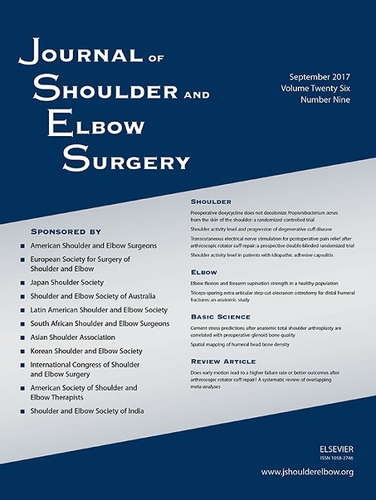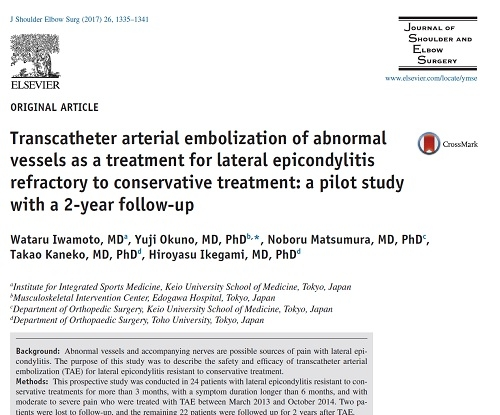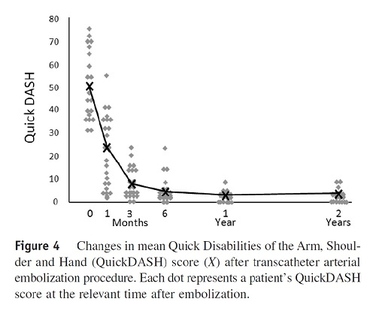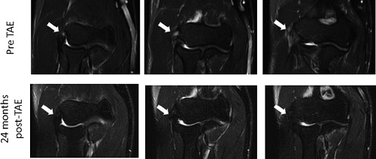Treatment result of transcatheter embolization for tennis elbow
Published: July 1st, 2017
Title: Transcatheter arterial embolization of abnormal vessels as a treatment for lateral epicondylitis refractory to conservative Treatment: a pilot Study with a 2-year follow up
On July 2017, Dr. Yuji Okuno’s research paper of transcatheter arterial embolization was published on the world’s most prestigious medical journal of shoulder and elbow surgery. We would like to introduce the research here.

The medical journal is “Journal of Shoulder and Elbow Surgery” from the United States, and probably every orthopedist who treats shoulder or elbow disease knows it.
This is an honor that Dr. Okuno’s research of transcatheter embolization was picked and introduced in this widely known medical journal.
The title of this research paper is “Transcatheter arterial embolization of abnormal vessels as a treatment for lateral epicondylitis refractory to conservative treatment: a pilot study with a 2-year follow up.”
Refractory here is indicating the patient who has suffered from pain for more than six months and has been treated by different treatments for more than three months, but still struggle with the pain.
In this research, 24 patients had catheterization arterial embolization treatment.
Most of them had been in pain for more than a year before they received treatments(average 17months).
It means that they had pain that was difficult to heal. The average age of the patients is 52. All the 24 patients had received physical therapy in the past, and 22 of the 24 had also received steroid injections, but they were not effective.
We conducted the transcatheter arterial embolization for those patients, and followed their post-operatively for a month, three months, six months, a year, and two years after the treatment.
The observation items were a score of pain intensity, a score of how well patient can use his/her elbow, and grip strength.
We also compared the MRI results before and 2 years after the treatment. This is the result.


↑ images of pre and post catheterization. Pre-treatment on left and post on right.
The black lines are problem blood vessels that cause pain. As you can see on the right image, they disappeared after the treatment.
First, we completed the follow ups for 22 of the 24 patients for 2 years after the treatment (It is usual in research that a certain number of people drop out of the study. Only two people have dropped out in this study, and it is actually a good number.)
When we look at the score of pain and how well they can use their elbow, they are statistically obviously improved.
Six months after the treatment, 88% of the patients were successfully improved (it is a very good result as all were with difficult-to-cure tennis elbow. Those who dropped out of the study were counted as treatment failures).
In addition, there was no one who had serious complications (severe side effect). This is not surprising since musculoskeletal catheterization was originally performed to more than 800 people and had no severe side effects.


Also, there is an obvious improvement of grip strength.
In this study, this is one of the features that we took an MRI 2 years after the treatment and compare pre- and post-treatment.
When comparing the MRIs, we found that the catheterization did not cause any side effects or anything else to be observed in tissues such as tendons, cartilage, or ligaments in the long term as well.
Also, the MRI taken before the treatment, we saw that there was some swellings or injuries in tendon, but the MRI after the treatment, we found that such damages improved rather than worsen.
It means that inflammation or swelling can be reduced after the treatment.
This needs to be considered carefully, but it indicates that tissue repair has been promoted after the treatment.
With this result, as a conclusion, the transcatheter embolization can be a treatment for difficult-to- cure tennis elbow and it may not just improve pain but may also have a positive effect on functional aspects such as grip strength and tissue repair.